Hyper-Lux Battle: The Jaeger-LeCoultre Master Grande Tradition vs Girard-Perregaux Constant Escapement L.M
Girard PerregauxPublished by: Samuel Colchamiro
View all posts by Samuel Colchamiro
In the world of hyper-luxury timepieces (this isn’t necessarily a formal term, but we are using it to refer to high tech mechanical watches), many brands have pushed the limits of mechanical engineering to enhance the performance of their watches. Today, we are going to compare two obscure models that most have probably never seen before. Jaeger-LeCoultre versus Girard-Perregaux, which will come out on top?

A special JLC minute repeater with several mechanical innovations presented in a modern package, the JLC Grande Tradition 151.T.67.S may not look immediately like a conventional Jaeger-LeCoultre watch, and that’s because it’s not. This reference is a contemporary masterpiece.
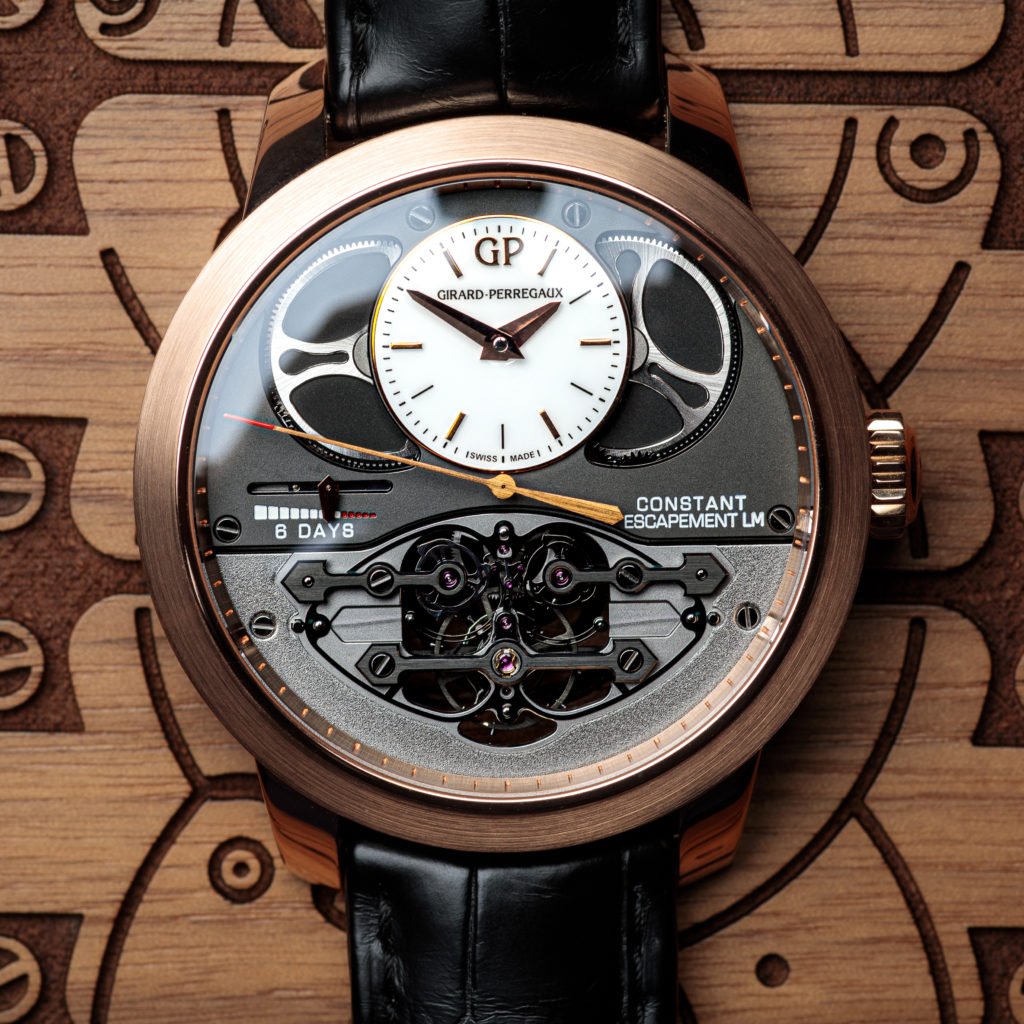
On the other end of the aisle Girard-Perregaux’s Constant Escapement L.M provides an innovative solution to the centuries-old battle watchmakers have grappled with to maintain accuracy of a timepiece as its mainspring unwinds. GP has an incredible history and legacy that few know about, and we will be sure to set the stage for just how significant this brand’s contributions were even prior to the release of their brilliant Constant Escapement. This is far from their first rodeo.
History
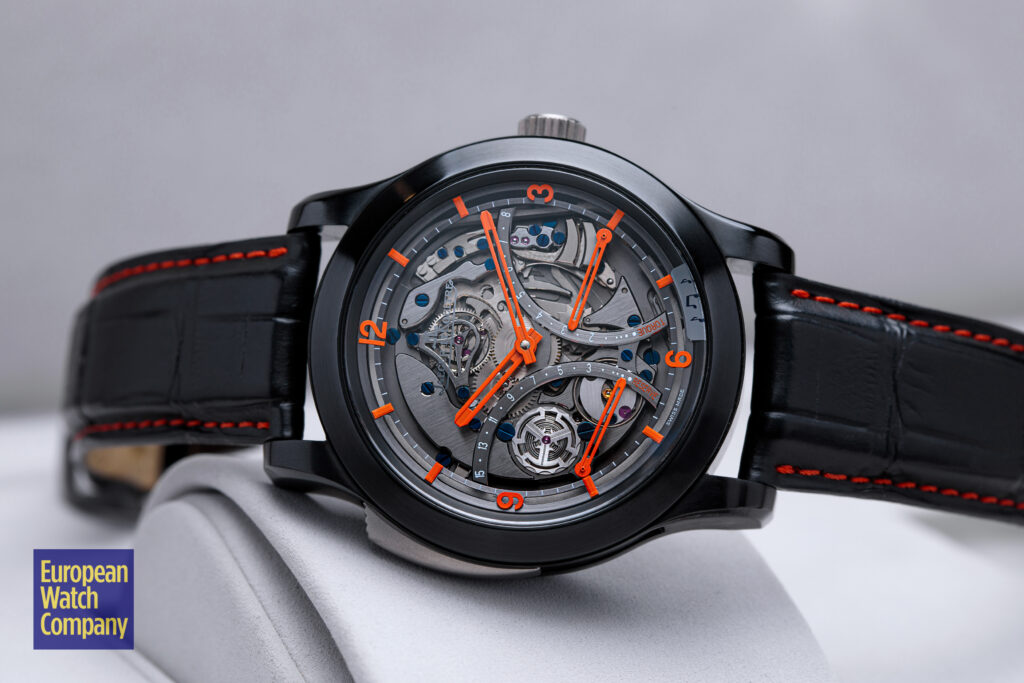
The story of the Jaeger-LeCoultre Grande Tradition 151.T.67.S begins with the introduction of the minute repeater in England in the late 17th century. JLC has been experimenting with the complication since 1870, offering a range of repeaters consistently throughout their history since. Perhaps most notably, in 1994, Jaeger-LeCoultre adapted the complication to fit within their famed Reverso.
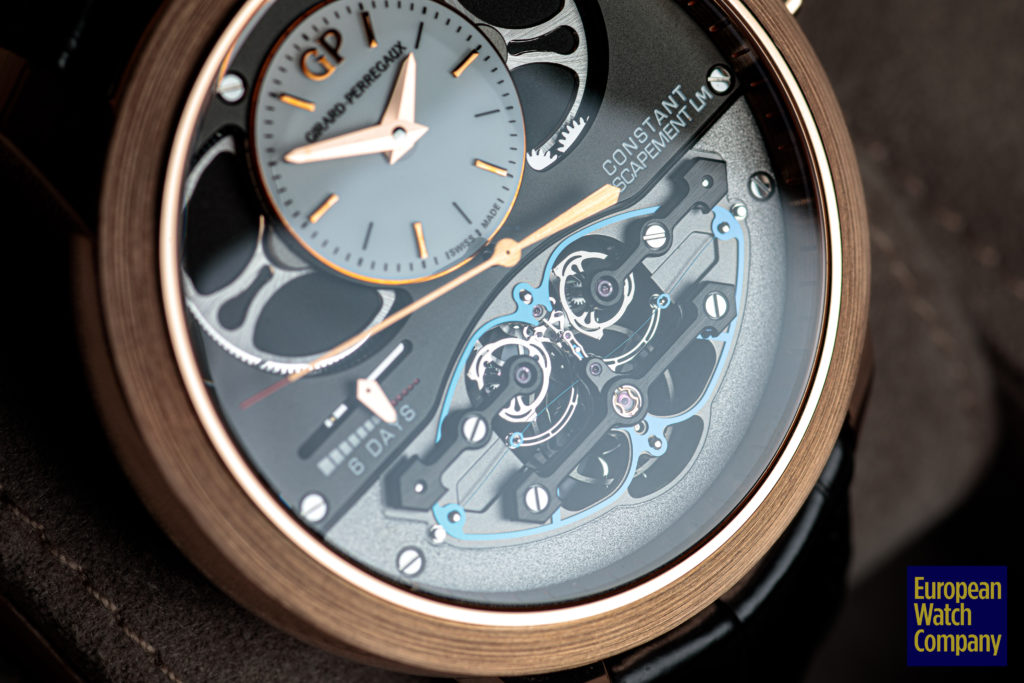
Girard-Perregaux began making watches in the 1700s and has actually been front and center in a variety of breakthroughs in the years since. In 1879, they made what is generally believed to be the first commercially produced wristwatch when they outfitted the German Navy with standardized timepieces. In 1884, the brand developed a three bridge tourbillon that was exceptionally accurate and quickly was disqualified from observatory competitions in order to keep the playing field fair for other competitors. In the 70s, GP set the standard quartz watch frequency now used in nearly every quartz watch — 32,768 hz. Finally, in 2008, the brand introduced the Constant Escapement we are covering today.
Design Details
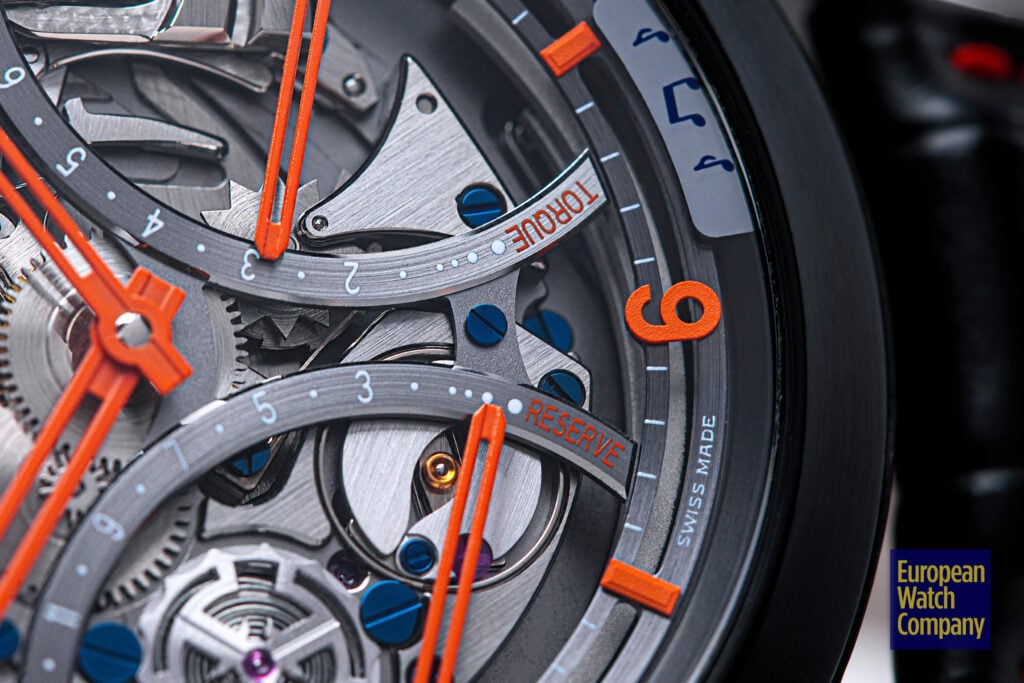
The JLC Grande Tradition Repeater is as modern as a minute repeater gets, especially from a traditional brand like Jaeger-LeCoultre. The dial is completely exposed, with most of the baseplate visible through the sapphire crystal. The power reserve and torque indications are also engraved in the same material, which could have had the unfortunate effect of rendering the dial illegible if not for the fact that JLC made the hands on this piece orange to ensure optimal contrast. The case is 44mm in titanium, which makes for a sizable yet light blend on the wrist. As with most minute repeaters, the repeating complication is activated via a slide on the left side of the case.
It’s quite refreshing to see JLC take such a forward looking approach to designing this watch, yet only 5 examples were made in this configuration.
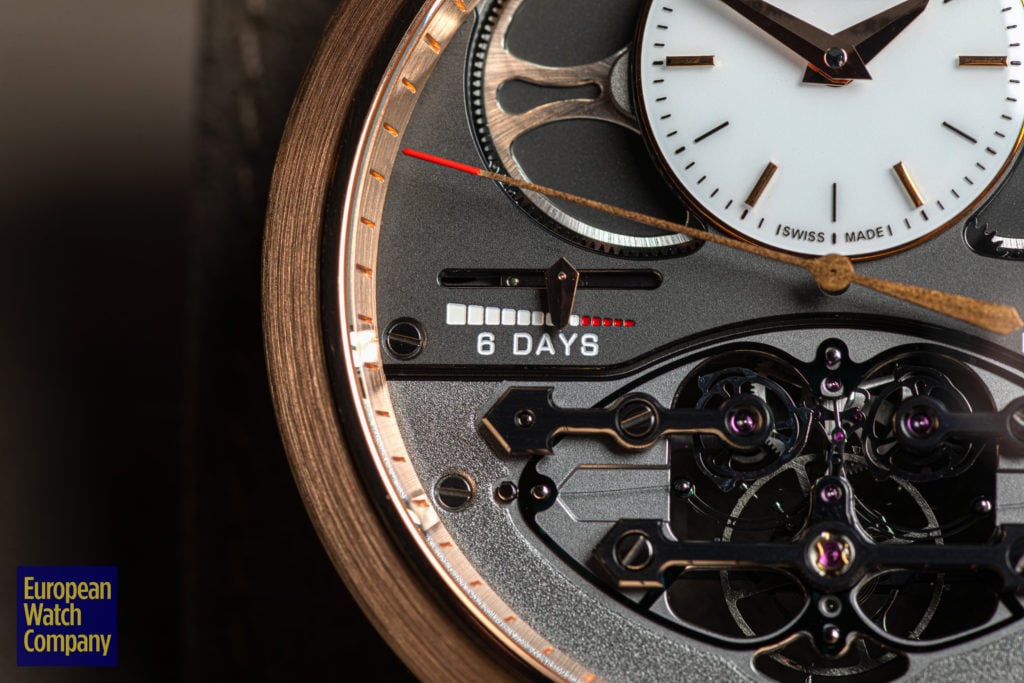
Girard-Perregaux has taken an entirely different approach to its entirely different timepiece. GP is known to shrink its primary dials to a fraction of the standard dial real estate to give further focus to the movement. This is certainly the case on this piece as well. Considering the monstrous 48mm of rose gold that comprise the case, the actual timekeeping component of the dial is relegated to a small spot at 12. This is likely done to flaunt the beautiful constant force system displayed at 6. The display itself has an awesome sliding power reserve indication at 9 o’clock, which shows the incredible 6 days of power reserve this watch provides. That’s right. 6 days. A center seconds hand sweeps around the entirety of the two tone split dial. It’s an interesting aesthetic that’s modern yet not at all rebellious.
Inner Workings
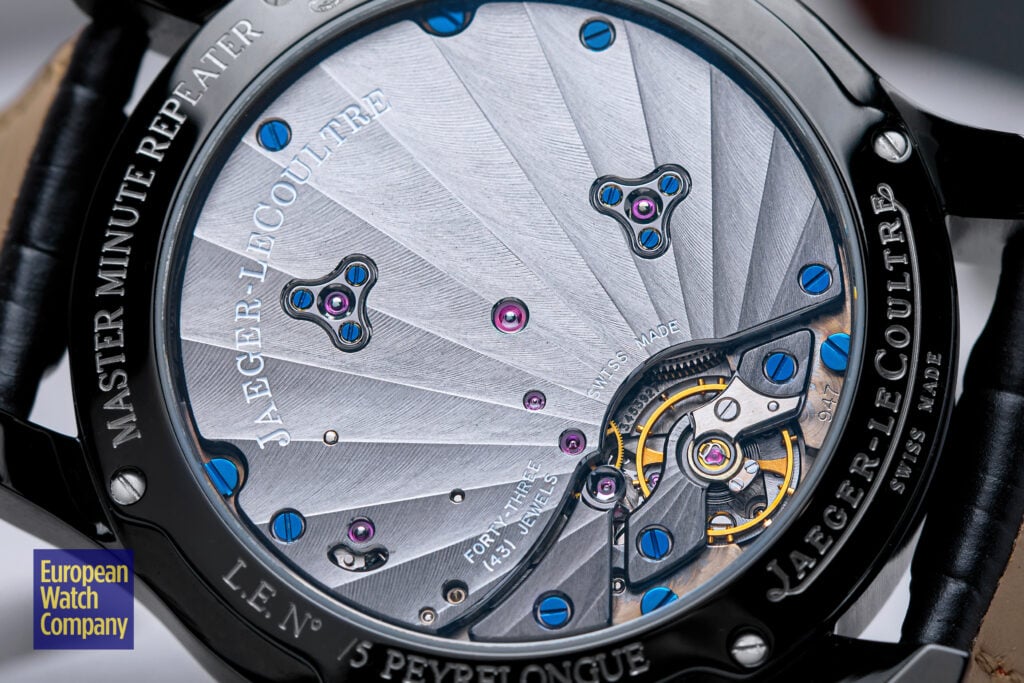
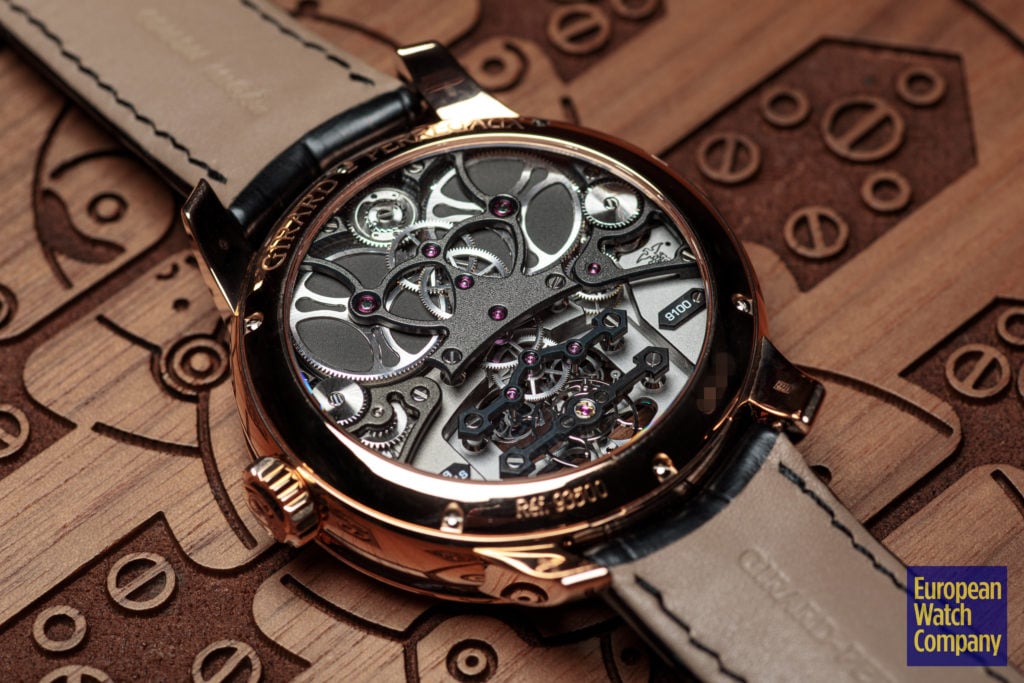
The movements of these pieces are really where they shine. First for JLC is the minute repeater caliber 947. The movement is rhodium plated to a darker hue which becomes the color on the dial side of the watch aforementioned. One struggle in the case of most minute repeaters is fragility. There are a series of exceptionally delicate components that must be protected to allow the watch to be worn without worry. Thus, caliber 947 is outfitted with an elaborate shock absorption system designed to cushion the piece in use. One of the most brilliant selling points on this piece is its 15 day power reserve. If you were surprised by the already unbelievable 6 day reserve on the GP, this will likely blow your socks off.
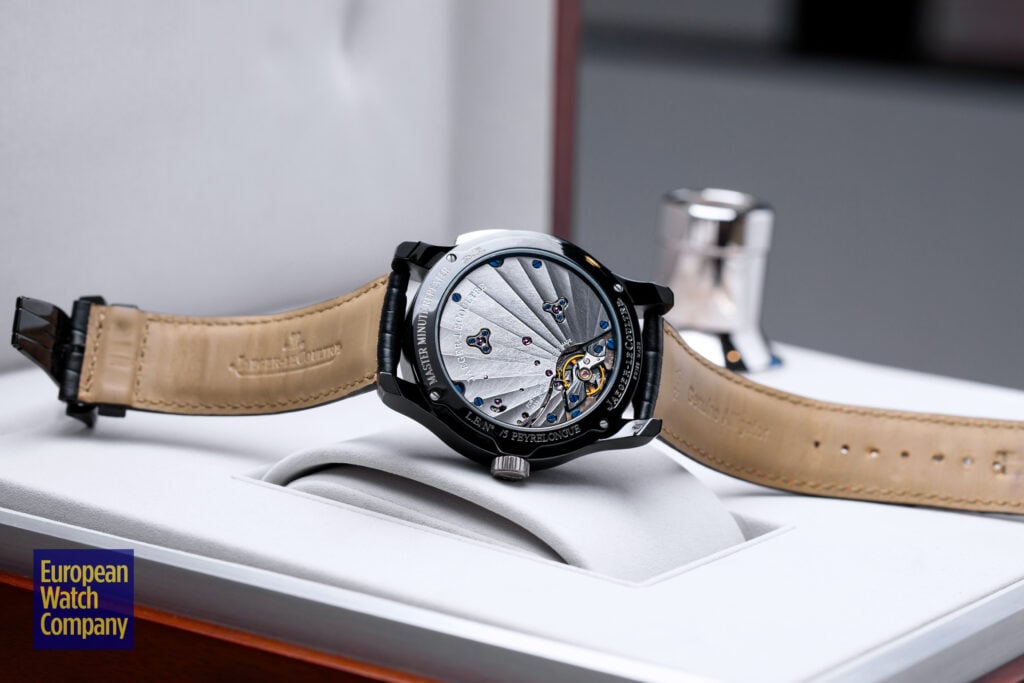
The finishing in the caliber 947 is quite distinctive as well. From the case back, the striping is applied in a sunray pattern. This is quite uncommon but yields a very interesting aesthetic. Finally, the gongs of the repeater are affixed along the crystal to ensure that even though the piece has been sealed for water resistance, it nonetheless has considerable audibility and projection. This is the push of innovation that allows a minute repeater to be usable in a modern context and it’s brilliant.
GP’s Constant Force Escapement L.M is every bit as interesting, albeit in a completely different way. For Girard-Perregaux, one of the priorities with movement, perhaps more than finish, is layout. Looking at the exposed portions of the movement, both on the dial and case back sides, you will notice symmetry. It is difficult to structure a movement architecture to make this a priority.
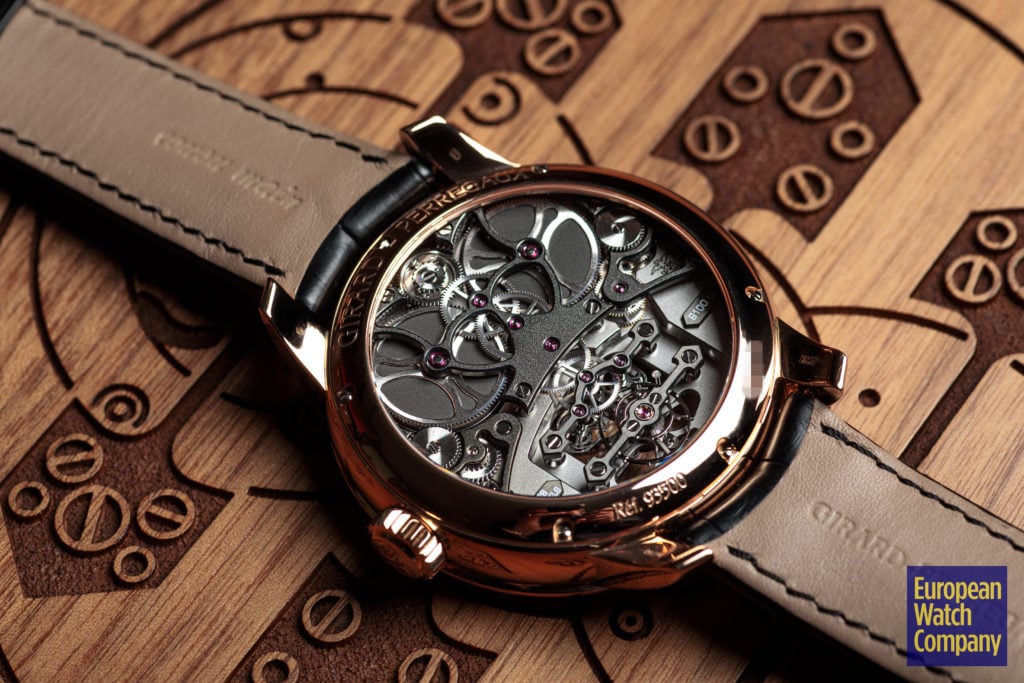
A constant force system essentially serves as an intermediary between the mainspring and the hairspring/ escapement. This system releases the exact same amount of energy even as the mainspring unwinds and thus the torque on the hairspring would ordinarily decrease (accuracy declining alongside it). Through constant force mechanisms a steady burst of energy is consistently released maintaining the reliability of the timekeeping as the power reserve dwindles. The other problem often encountered on constant force systems is a big drain on power reserve. Yet, as mentioned earlier, this watch still has a 6 day reserve, which would be notable on a watch with a conventional escapement!
Personality
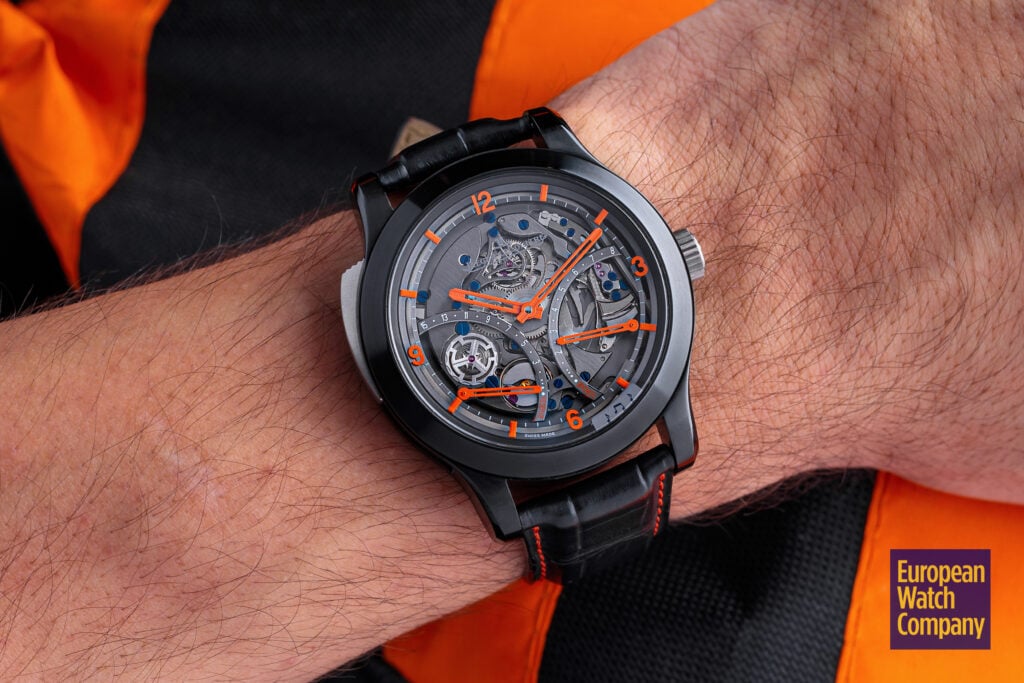
These two pieces share a common goal of modernizing traditional watchmaking. That said, they achieve these goals in different ways and to different degrees. Based on these approaches you can ultimately decide which is better for you.
In the case of JLC, the brand was going for an extremely limited open dial approach to the minute repeater. With an exceptional power reserve and high tech shock absorption, the intent was to intermesh modern technologies into a traditional complication. JLC is first and foremost a traditional brand; looking through its collections, its approach is consistently to create beautiful dress pieces. This watch goes further toward an RM philosophy, introducing a new clientele to the JLC brand that may not otherwise look at the brand. For collectors that respect Jaeger LeCoultre but favor a less buttoned up high complication, this may be an attractive option. The quality is undeniable but the focus is decidedly different.
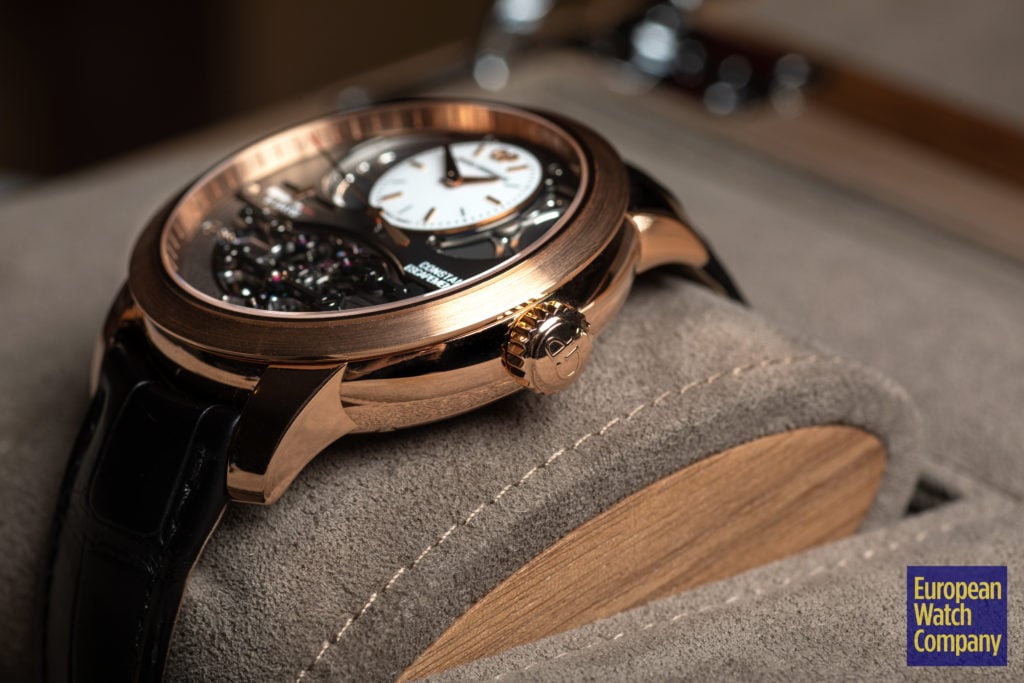
Girard-Perregaux’s watch from a movement perspective is actually quite traditional and classical. The issue of constant force has challenged watchmakers since the introduction of the lever escapement system. Where the execution of the piece is unique, it isn’t intrinsically modern like the JLC. Instead, it would be best described as different. The only detail that suggests a truly contemporary market positioning is its 48mm size which is large even by modern standards. That said, this sizing is understandable given the mechanical brilliance contained within the large case. The GP feels more artistic than the JLC. The symmetrical movement, split dial, open view into the constant force, etc, all lend to what looks to be a bit more attention to design. That’s not to say the JLC doesn’t have that, it just stands out on the GP as especially noteworthy.
Final Thoughts
The question that remains is which piece more accurately reflects your philosophy. Both designed for a niche market of discerning enthusiasts, these watches are not mass market timepieces. That makes them incredibly attractive to the collectors that value the ability to distinguish themselves with their individual styles and tastes. Let us know which watch you’d buy!
Visit Europeanwatch.com
Previous Article
Tactical Watchmaking: The Audemars Piguet Royal Oak Offshore “Survivor” Limited Edition
Next Article
Clashing Modernists: Audemars Piguet Royal Oak Concept Carbon vs Richard Mille RM 002-V2
Join 75,000+ Other Watch Enthusiasts
Get our new arrivals first.